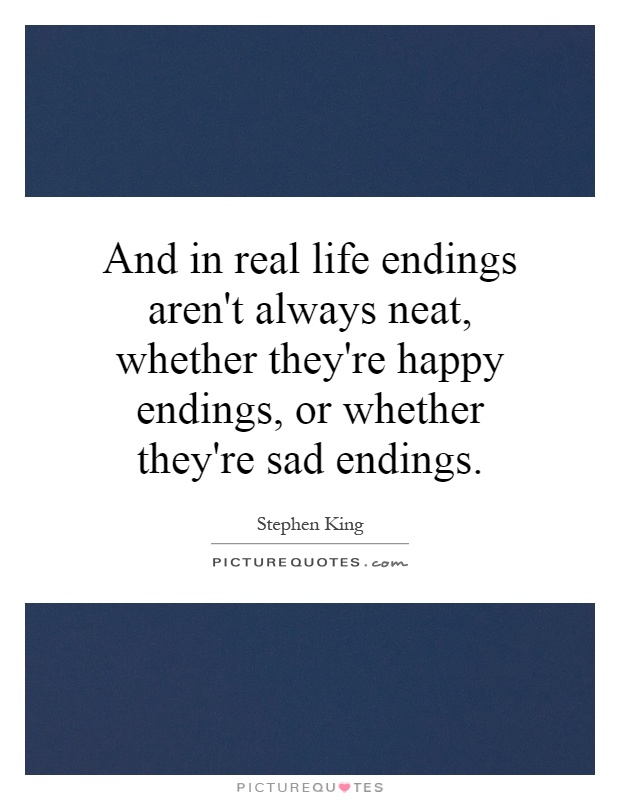And in real life endings aren't always neat, whether they're happy endings, or whether they're sad endings

And in real life endings aren't always neat, whether they're happy endings, or whether they're sad endings
Stephen King, the master of horror and suspense, is known for his ability to craft intricate and chilling stories that often leave readers on the edge of their seats. One of the reasons why King's novels are so captivating is because he understands that in real life, endings aren't always neat. Whether they're happy endings or sad endings, life is messy and unpredictable, and King's stories reflect this reality.In many of King's novels, the endings are far from tidy. Characters may survive harrowing ordeals, only to be left scarred and traumatized by their experiences. The resolution of the plot may not tie up all loose ends, leaving readers with lingering questions and a sense of unease. This refusal to neatly wrap up his stories in a bow is what sets King apart from other authors in the horror genre. He understands that life is messy and complicated, and his endings reflect this truth.
One of King's most famous novels, "The Shining," is a perfect example of this. The novel follows the Torrance family as they move into the isolated Overlook Hotel, where they are haunted by malevolent spirits. The novel builds to a terrifying climax, but the ending is far from a traditional happy ending. Jack Torrance, driven mad by the hotel's influence, ultimately succumbs to his demons and dies in a snowstorm. His wife Wendy and son Danny survive, but they are left traumatized by their ordeal. The novel ends with a sense of unease, as the reader is left to wonder what will become of the surviving characters.












 Friendship Quotes
Friendship Quotes Love Quotes
Love Quotes Life Quotes
Life Quotes Funny Quotes
Funny Quotes Motivational Quotes
Motivational Quotes Inspirational Quotes
Inspirational Quotes